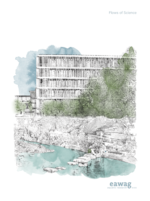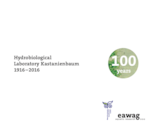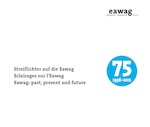History
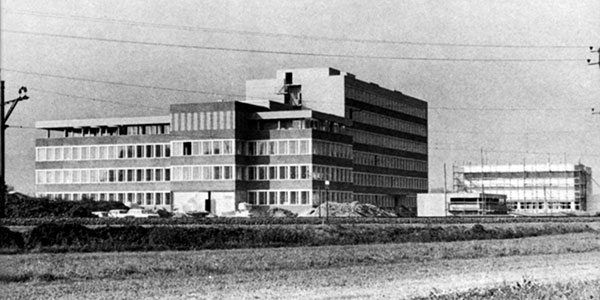
These days, people do not hesitate to swim in Swiss lakes and rivers, they can drink clean water and do not have to worry about their waste water being cleaned up. That has not always been the case. Even fifty years ago, rivers foamed and lakes were polluted.
Eawag has played a leading role, not only in Switzerland but also in Europe and in many other countries, in research, consultancy and teaching activities in the fields of aquatic ecology, the environmental behaviour of substances, and urban water management. It can look back on a varied and dynamic past. Starting out as the ETH Zurich (Swiss Federal Institute of Technology Zurich) Advisory Centre, with three employees, it has developed into an internationally recognised research institute that now has more than 500 employees across two sites in Switzerland.
75 years of Eawag
In 2011 the water research institute of the ETH celebrated its 75th anniversary with an open view of the future of water. Eawag presented itself at different occasions and also hosted various events. The brochure "Eawag: Past, present and future" published in the anniversary year provides an insight into water research in the past, the present and the future.
100 years of hydrobiological laboratory in Kastanienbaum
Only a few years after its 75th anniversary, the Hydrobiological Laboratory in Kastanienbaum celebrated its 100th anniversary in 2016. Founded in 1916 and taken over by Eawag in 1960, more than 100 researchers from all over the world work in the laboratories today. The small laboratory has become the competence centre for ecology, evolution and biogeochemistry.
Eawag today
In the past the installation of a functioning water infrastructure, provision of clean drinking water and water protection were in the focus. That pressure on water resources is still increasing. That is why Eawag and its research facilities are promoting solutions now that strike a balance between the needs of nature and those of people.
Publications
The brochures "75 Years Eawag: Highlights on Eawag" and "Flows of Science" can also be ordered as printed editions. Please send us an e-mail.
Development phases of Eawag
In the past 75 years Eawag has played a leading role, not only in Switzerland but also in Europe and in many other countries, in research, consultancy and teaching activities in the fields of aquatic ecology, the environmental behaviour of substances, and urban water management. It can look back on a varied and dynamic past. The history of the institute can be roughly divided into five development phases. A historical review provides additional information on the interconnection between Eawag’s activities and the social and political developments in Switzerland. The annual reports of Eawag from 1946 to 2022 give a deeper insight into the research institute.
1936-1952: Dr. Ulrich Corti
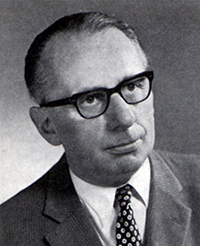
At the beginning of the last century the improved water supply systems in towns led to problems in disposing of waste waster that was passed into waterways either untreated or at best after mechanical treatment. Therefore in 1933 the Swiss Angling Association demanded that the Swiss Interior Ministry take measures to combat the increasing levels of water pollution and set up an advisory centre for water treatment. On 1 January 1936 the Federal Council established the “ETH Advisory Centre for Waste Water Treatment and Drinking Water Supply”. The Hygiene Institute, led by Professor Willi von Gonzenbach, and the Aquatic Engineering Test Facility, headed by Professor Eugen Meyer-Peter, formed the basis of the new institute. In addition to providing advisory services, it focused on research and education in the field of waste water treatment technology as well as on monitoring the quality of water as a control instrument for the correct operation of treatment plants.
In 1945 the Advisory Centre became the Swiss Federal Institute for Environmental Science and Technology, affiliated to the ETH. It was headed by Dr. Ulrich Corti, a chemist.
1952-1970: Prof. Dr. Otto Jaag
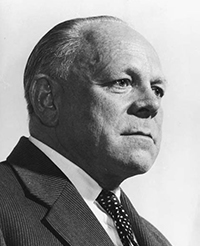
In 1952 Professor Otto Jaag was appointed as Director of Eawag. He lectured at the ETH Zurich on hydrobiology and limnology as well as on special botany, and he showed an early and consistent commitment to establishing water protection legislation. At Eawag Jaag set up a Limnology department and simultaneously built up the advisory and educational activities, especially for civil engineers. In 1955 he expanded the institute to include a Waste Disposal Research department as a consequence of the clear connections between the waste disposal methods used at that time and the pollution of the waterways and ground water. From the 60s onwards Eawag increasingly concentrated on its remit as a research centre. Pioneering studies were carried out on the overfertilisation of lakes, on the self-cleaning powers of waterways, and on the measurement of biological treatment plants. In 1960 the natural scientific areas were enhanced when Eawag took over the “Hydrobiological Laboratory” in Kastanienbaum on Lake Lucerne from the Naturforschende Gesellschaft Luzern (Lucerne Society of Natural Science). Thanks to his network of contacts, Director Jaag was able to ensure the necessary funding for the renovation, extension and modern facilities of this laboratory, which also became the site of the new Fishery Sciences department in 1969. In 1970 Eawag, until then an institute of the ETH Zurich became an affiliated institute within the ETH system, and in the same year, just a few months after Jaag retired, it moved into its new premises in Dübendorf.
1970-1992: Prof. Dr. Werner Stumm
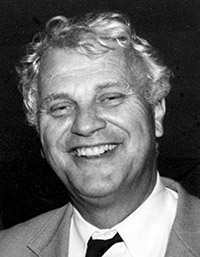
Werner Stumm was an employee at Eawag from his graduation as a chemist until 1956. Then he worked for 14 years as a researcher and lecturer in the field of aquatic chemistry at Harvard University in Boston, USA. From 1970, as the new Director of Eawag, Werner Stumm assigned even more importance to fundamental research than his predecessor, Jaag. He recognised early on that environmental sciences have to be pursued in an interdisciplinary fashion, and so he demanded that that not only chemical, but also geological, biological and ecological aspects should be included. He motivated the researchers to keep an eye on the increasing number of industrially manufactured substances, and he looked for ways to improve analytical procedures.
In 1975 the new Ordinance for Waste Water Disposal set clear quality targets for water protection for the first time. Eawag had provided the basis for this, but the ordinance was also a spur to carry out further research on measurable criteria on the basis of ecotoxicology. In response to the reproach that advisory aspects were being neglected, Stumm enhanced the training and continuing education provision, including the introduction of a postgraduate course in Urban Water Management and Water Protection.
1992-2007: Prof. Dr. Alexander Zehnder
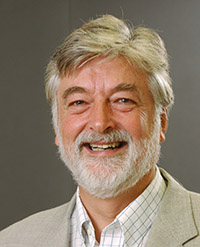
Professor Alexander Zehnder, a biochemist, became Director of Eawag in 1992 at a time of great changes. The ETH legislation had been amended, and in 1993 Eawag became an independent institute like the ETH Zurich and the ETH Lausanne and the other three research institutes (Empa, WSL and PSI). With his scientific commitment, his ambassadorial activities and his global contacts with respected institutes, Zehnder motivated many colleagues to make their mark with their own innovative research studies. Under his management, Eawag started to involve itself in the question of water availability, especially for food manufacturing. He made many advances in the fields of degradation of pollutants, biofilms and corrosion protection. In the field of ecotoxicology he promoted the change to understanding the process instead of simply describing the effects. Even more clearly than Stumm, Zehnder promoted interdisciplinary cooperation and the embracement of implementation and practice, for example in initiatives such as Fischnetz (fish decrease in Switzerland) and Greenhydro (environmentally friendly use of water power).
When Professor Alexander Zehnder was appointed President of the ETH Board in the summer of 2004, his deputy, Ueli Bundi, became the temporary Director of Eawag.
2007-2022: Prof. Dr. Janet Hering
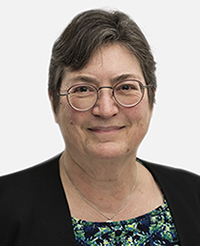
Prof. Dr Janet Hering was Director of Eawag and Full Professor of Environmental Biogeochemistry at ETH Zurich and Professor of Environmental Chemistry at EPFL from 2007 to 2022. As Director, Janet Hering made a significant contribution to developing Eawag into a globally recognised research institute. In particular, she strengthened the scientific output of specialist publications and the mentoring of young researchers. Janet Hering also paid great attention to the exchange between science and the public and authorities. Janet Hering researches the treatment of contaminated water to produce drinking water, the biochemical behaviour of trace metals and increasingly the exchange of knowledge between research, society and politics.
She received her PhD in oceanography from the Massachusetts Institute of Technology (MIT) in 1988 and was a professor of environmental science and technology at the California Institute of Technology and the University of California from 1991 to 1996 and again from 1996. Janet Hering has been a strong advocate for diversity and the increased representation of women in scientific leadership and professorships during her time as professor and director.
2023-today: Prof. Dr Martin Ackermann
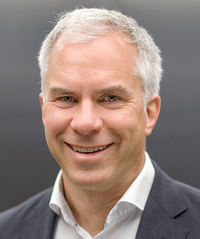
Since 2023, Eawag has been under the direction of Martin Ackermann.
Martin Ackermann studied biology at the University of Basel, where he obtained his doctorate in 2002. He then worked for two years as a postdoctoral researcher at the University of California, San Diego. In 2004, he moved to the ETH Zurich as a senior assistant and became an SNF assistant professor in March 2006 and was appointed associate professor by the ETH Board in 2008 and full professor in 2015. In addition to his professorship, Martin Ackermann headed the Environmental microbiology research department at Eawag for ten years with around 50 employees, which is a leader in solution-oriented research in aquatic microbiology.
With his research group, Martin Ackermann works on fundamental questions about the ecology and evolution of bacteria. The objective is to expand the understanding of the biology of bacteria in nature and also to provide insights that have practical added value for the check and use of bacterial activities.
Martin Ackermann has published over 100 scientific papers in international journals, many of them leading interdisciplinary journals. He is a member of the European Academy of Microbiology and is successfully involved in promoting young scientists. He was also Vice-President of the Swiss National COVID-19 Science Task Force from April 2020 and President from August 2020 to August 2021.
Historical review of the development of Eawag
The historical review shows Eawag’s most important developments since the foundation. It provides additional information on the interconnection between Eawag’s activities and the social and political developments in Switzerland.
| 1936 | The Swiss Angling Association approaches the Swiss Interior Ministry in 1933 to demand that measures be taken to combat the increasing water pollution and that an advisory centre for effluent treatment be set up. The establishment of the Advisory Centre for Effluent Treatment and Water Protection at the ETH Zurich signals the creation of Eawag. At the start, one chemist, one biologist and one engineer work for the Advisory Centre. |
| 1946 | The Advisory Centre becomes Eawag (Swiss Federal Institute for Environmental Science and Technology), an institute that is affiliated to the ETH. Dr. Ulrich Corti is appointed Director of the affiliated institute. Eawag is organised into four specialist areas:
|
| 1952 | Professor Dr. Otto Jaag is appointed the new Director of Eawag. Under his leadership Eawag concentrates on its advisory activities. The objective is to resolve problems as rapidly as possible. Above all, treatment plants are to be built to prevent untreated effluent reaching waterways. The new “Hydrobiology/Limnology” department is created. |
| 1955 | Creation of the “Solid Waste Products” department. |
| 1957 | Eawag plays a decisive role in the implementation of the first water protection legislation in Switzerland, by assessing projects concerned with sewage systems, treatment plants and other water protection measures. |
| 1960 | Acquisition of the Hydrobiological Laboratory in Kastanienbaum by Eawag from the Naturforschende Gesellschaft Luzern (Lucerne Society of Natural Science). --> Expansion of research activities in the fields of limnology and hydrobiology. |
| 1961 | Criticism from the Federal Office for Water Protection that Eawag carries out too little research and concentrates too much on consultancy leads to research projects in the fields of eutrophisation of lakes, self-cleaning powers of waterways, and biological treatment plants. |
| 1962 | Otto Jaag publishes many articles in specialist journals on water protection and waste water treatment. During his time as Director of Eawag he makes many international contacts. |
| 1969 | Creation of the “Fishery Sciences” department. |
| 1970 | Professor Dr. Werner Stumm, a chemist, becomes the new Director of Eawag. Until then an institute in the ETH Zurich, Eawag now becomes an affiliated institute within the ETH system. Fundamental research activities come to the fore. Eawag moves into its new premises in Dübendorf. |
| 1975 | Eawag supports the quantification of water protection goals. |
| 1977 | Eawag moves into the new facilities in Kastanienbaum (Canton of Lucerne). |
| 1979 | The “Urban Water Management and Water Protection” postgraduate course is created at the ETH Zurich. |
| 1987 | The Aquatic Ecotoxicology Research group is founded. |
| 1992 | Professor Dr. Alexander Zehnder, a biochemist, is appointed Director of Eawag. He initiates discussion of sustainability in terms of water and energy. Eawag also concentrates more on interdisciplinary projects. |
| 1993 | Practice-oriented Eawag courses (PEAK) are offered for the first time. |
| 2004 | Creation of the Fishery Advisory Centre at Eawag |
| 2006 | Eawag moves into the new Forum Chriesbach building in Dübendorf |
| 2007 | Professor Dr. Janet Hering is appointed Director of Eawag. |
| 2008 | Establishment of Water Agenda 21 The headquarters of Water Agenda 21 are located at Eawag. Creation of the Ecotox Centre at Eawag. |
| 2011 | Eawag celebrates its 75th anniversary and intensifies its dialogue with practitioners. |
| 2012 | Eawag defines its research priorities.
|
| 2012 | Eawag becomes the World Health Organization's "WHO Collaborating Centre for Sanitation and Water in Developing Countries". |
| 2013 | The new research vessel "Otto Jaag" on Lake Greifen is launched. |
| 2014 | With Massive Open Online Courses (Moocs), Eawag is implementing a new form of knowledge transfer. |
| 2015 | The new laboratory and test building "Aquatikum" starts operation. |
| 2015 | A unique facility with 36 ponds for field trials is being built. |
| 2016 | The modular experimental building NEST and the Water Hub are opened. |
| 2019 | The "LéXPLORE" platform is anchored in Lake Geneva. |
| 2020 | Eawag defines conceptual frameworks for its further development
|
| 2021 | The new FLUX building in Dübendorf is occupied. |

